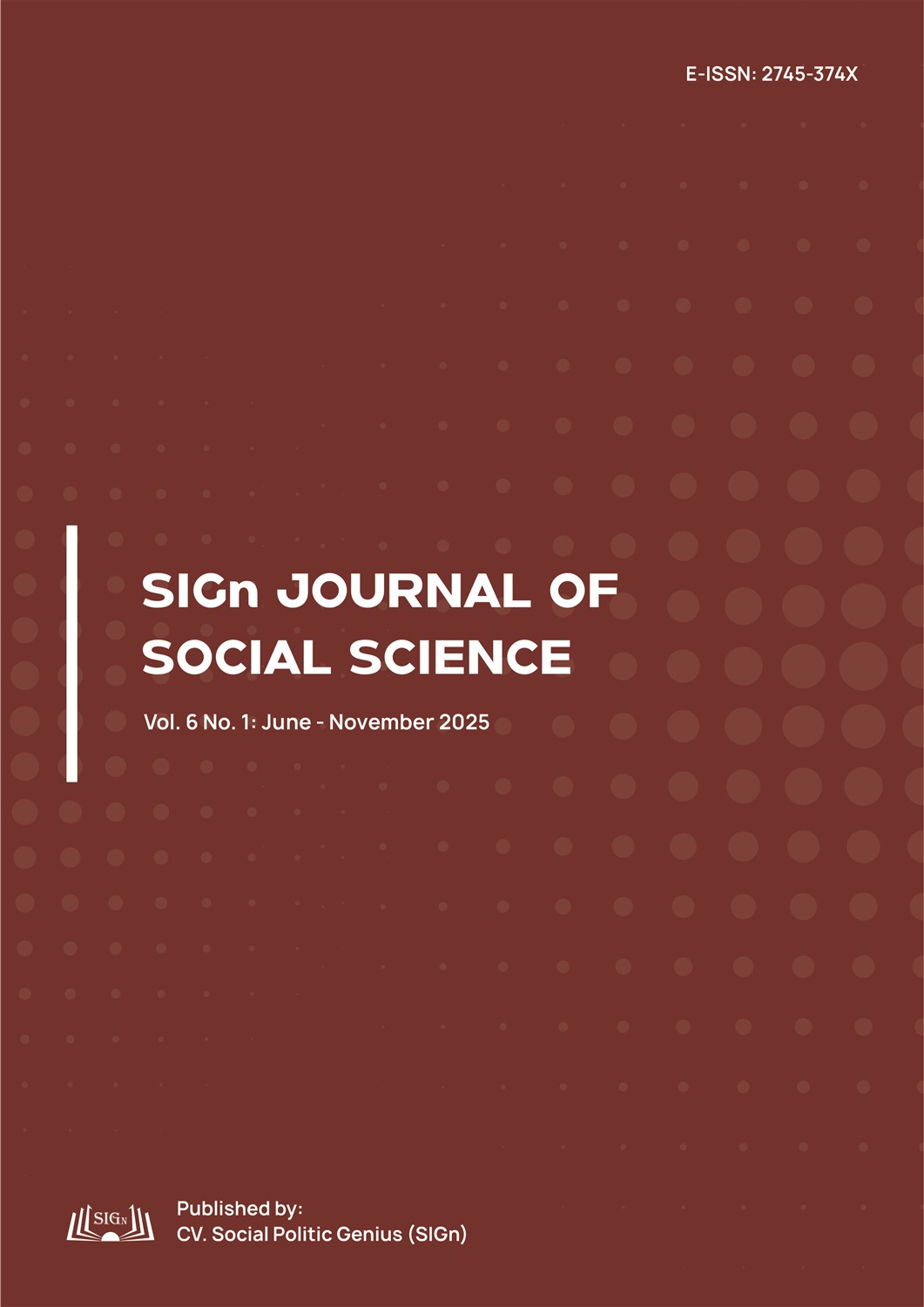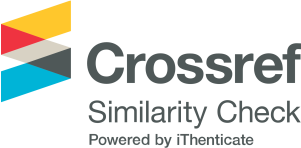Empirical Analysis of Rehabilitation Programs for Children in Conflict with the Law at Jayapura Class II Juvenile Correctional Facility
Abstract
Amid the paradox between the idealism of humanistic child protection regulations and high recidivism rates, this study examines the effectiveness of rehabilitation programs for children in conflict with the law. This study aims to analyze in-depth how the rehabilitation program at the Jayapura Class II JCF operates as a mechanism to reconstruct social bonds. This process is analyzed using Hirschi’s Social Control Theory as a framework. Applying an empirical legal method with a case study approach, primary data were collected through semi-structured interviews with officers and juvenile residents as well as participatory observation, and were subsequently analyzed qualitatively. The results indicate that the three main programs—physical and spiritual development, social development, and education—work synergistically as an architecture of social engineering to mend and reinforce the four elements of the social bond. Attachment is built through communal structures. Commitment is instilled through investment in orderliness and the development of future skills. Involvement is ensured through a densely structured schedule. Belief is reconstructed through consistent moral education. A crucial finding reveals that although formal education faces structural constraints, the non-formal skills program is more effective in building commitment. It is concluded that the key to successful rehabilitation lies not in the luxury of facilities, but in an institution’s ability to systematically re-weave torn social bonds, which serves as the foundation for the successful rehabilitation and social reintegration of children.
Downloads
References
Adiningsih, Y., & Batubara, G. T. (2025). The Paradox of Implementing Restorative Justice at the Investigation Stage: A Systematic Weakening of Sentence Enhancement for Repeat Offenders. SIGn Jurnal Hukum, 7(2), 627-646. https://doi.org/10.37276/sjh.v7i2.496
Akbar, A. A., & Musakkir, M. (2022). Legal and Economic Analysis: A Case Study of Convict Self-Development. SIGn Jurnal Hukum, 4(2), 173-190. https://doi.org/10.37276/sjh.v4i2.205
Alghifari, A., & Yusuf, Y. (2025). Realita dan Dinamika Hukum Anak Pelaku Pidana. Jurnal SAKAAI: Jurnal Ilmu Sosial dan Humaniora, 2(2), 83-98. Retrieved from https://jurnalaaipengdariau.com/index.php/sakaai/article/view/66
Aprianto, R., Purnawati, A., & Syah, K. (2021). Implementasi Program Pembinaan Anak Didik Pemasyarakatan pada Lembaga Pembinaan Khusus Anak (LPKA) Kelas II Palu. Jurnal Kolaboratif Sains, 4(6), 321-329. https://doi.org/10.56338/jks.v4i6.1918
Ashari, A., & Dewi, G. (2021). Juridical-Empirical Overview of Prisoners’ Guidance Model During the Covid 19 Pandemic in Class IIA Correctional Institution Sumbawa Besar. UNRAM Law Review, 5(2), 198-203. https://doi.org/10.29303/ulrev.v5i2.188
Boymau, A. H. A., Fallo, D. F. N., & Fanggi, R. A. (2023). Tinjauan Yuridis Sosiologis Sistem Pembinaan Narapidana Residivis di Rumah Tahanan Negara Kelas IIB Kefamenanu. COMSERVA: Jurnal Penelitian dan Pengabdian Masyarakat, 3(2), 457-465. https://doi.org/10.59141/comserva.v3i02.790
Chamdani, C., Indradjaja, N., & Nurhandy, F. (2024). Diversion as the Case Resolution for Children in Conflict with the Law within the Perspective of Legal Psychology. Awang Long Law Review, 6(2), 478-482. https://doi.org/10.56301/awl.v6i2.1199
Costello, B. J., & Laub, J. H. (2020). Social Control Theory: The Legacy of Travis Hirschi’s Causes of Delinquency. Annual Review of Criminology, 3(1), 21-41. https://doi.org/10.1146/annurev-criminol-011419-041527
Efendi, A., & Nurjanah, R. (2019). Literary Learning for Teenager Inmates in Institute for Children Special Rehabilitation. Cakrawala Pendidikan, 38(3), 411-425. https://doi.org/10.21831/cp.v38i3.27322
Etikan, I., Musa, S. A., & Alkassim, R. S. (2016). Comparison of Convenience Sampling and Purposive Sampling. American Journal of Theoretical and Applied Statistics, 5(1), 1-4. https://doi.org/10.11648/j.ajtas.20160501.11
Hirschi, T. (1969). Causes of Delinquency. University of California.
Hirschi, T. (2017). Causes of Delinquency. University of California Press. https://doi.org/10.4324/9781315081649
Khahar, A. (2020). Bimbingan Agama Terhadap Tindak Kriminal. TASAMUH: Jurnal Studi Islam, 12(1), 69-93. https://doi.org/10.47945/tasamuh.v12i1.238
Laia, F. F. D. (2024). The Urgency of Enacting Government Regulation on Community Service Sentence in Indonesian under the New Penal Code. SIGn Jurnal Hukum, 6(1), 1-16. https://doi.org/10.37276/sjh.v6i1.350
Law of the Republic of Indonesia Number 11 of 2012 on the Juvenile Criminal Justice System (State Gazette of the Republic of Indonesia of 2012 Number 153, Supplement to the State Gazette of the Republic of Indonesia Number 5332). https://www.dpr.go.id/dokumen/jdih/undang-undang/detail/271
Law of the Republic of Indonesia Number 22 of 2022 on the Correctional System (State Gazette of the Republic of Indonesia of 2022 Number 165, Supplement to the State Gazette of the Republic of Indonesia Number 6811). https://www.dpr.go.id/dokumen/jdih/undang-undang/detail/1810
Leeuw, F. L., & Schmeet, H. (2016). Empirical Legal Research: A Guidance Book for Lawyers, Legislators and Regulators. Edward Elgar Publishing. https://doi.org/10.4337/9781782549413
Legal and Public Relations Bureau. (2024, September 19). Kemen PPPA Bersama LPKA Perkuat Perlindungan Anak Berhadapan dengan Hukum (Press Release). Ministry of Women’s Empowerment and Child Protection of the Republic of Indonesia. https://www.kemenpppa.go.id/index.php/siaran-pers/kemen-pppa-bersama-lpka-perkuat-perlindungan-anak-berhadapan-dengan-hukum
Lestari, R. A., Rivanie, S. S., & Soewondo, S. S. (2023). Implementation of Restorative Justice for Narcotic Abusers: A Case Study in the Takalar Public Attorney’s Office. SIGn Jurnal Hukum, 5(1), 207-220. https://doi.org/10.37276/sjh.v5i1.275
Listyarini, D. (2017). Juvenile Justice System through Diversion and Restorative Justice Policy. Diponegoro Law Review, 2(1), 168-184. https://doi.org/10.14710/dilrev.2.1.2017.168-184
Miles, M. B., Huberman, A. M., & Saldaña, J. (2014). Qualitative Data Analysis: A Methods Sourcebook (Third Edition). Sage.
Praptomo, D. (2023, May 10). Hak dan Kewajiban Klien Pemasyarakatan Menurut Undang-Undang No. 22 Tahun 2022 tentang Pemasyarakatan. Direktorat Jenderal Pemasyarakatan. Retrieved April 2, 2025, from https://www.ditjenpas.go.id/hak-dan-kewajiban-klien-pemasyarakatan-menurut-undang-undang-22-tahun-2022-tentang-pemasyarakatan
Prasetya, M. D., Sari, I. P., Said, S., & Akbar, A. (2023). Forms and Developments of Narcotics Crime during the Covid-19 Pandemic: A Case Study of Court Decision. SIGn Jurnal Hukum, 4(2), 291-307. https://doi.org/10.37276/sjh.v4i2.164
Qamar, N., & Rezah, F. S. (2020). Metode Penelitian Hukum: Doktrinal dan Non-Doktrinal. CV. Social Politic Genius (SIGn).
Rivanie, S. S., Komuna, A. P., Putra, A. A., Utama, P. F., & Muzakkir, A. K. (2021). Protection of Children as Perpetrators of Criminal Act Stimulated by Pornography Based on Indonesian Laws. Musamus Law Review, 4(1), 1-15. https://doi.org/10.35724/mularev.v4i1.3759
Sampara, S., & Husen, L. O. (2016). Metode Penelitian Hukum. Kretakupa Print.
Saunders, V., & McArthur, M. (2020). Representing Children of Prisoners in the Public Domain: Comparing Children’s Views and Policy Documents. Australian Social Work, 73(1), 118-130. https://doi.org/10.1080/0312407X.2018.1492623
Senandi, W. A. A., & Krey, T. H. M. Y. (2024). Efektifitas Pelaksanaan Pembinaan Anak Didik Pemasyarakatan di Lembaga Pembinaan Khusus Anak Kelas II Jayapura. Jurnal Hukum Ius Publicum, 5(1), 26-40. https://doi.org/10.55551/jip.v5i1.81
Sibuea, H. Y. P. (2023). Upaya Memperkuat Perlindungan Hak Anak yang Berkonflik dengan Hukum. Isu Sepekan, Agustus(5), 1-2. Retrieved from https://berkas.dpr.go.id/pusaka/files/isu_sepekan/isu%20sepekan---v-puslit-agustus-2023-215.pdf
Sunoto, S. P., Aziz, W. K., & Dhesthoni, D. (2023). Ketahanan Sosial dan Pengaruhnya Terhadap Penyalahgunaan Narkoba Pada Remaja: Perspektif Teori Kontrol Sosial Travis Hirschi. Jurnal Kajian Stratejik Ketahanan Nasional, 6(1), 1-11. https://doi.org/10.7454/jkskn.v6i1.10073
Tarwiyah, S., Tuasikal, H., & Sriyati, S. (2024). Pemenuhan Hak Narapidana Anak Sebagai Upaya Perlindungan di Lembaga Pemasyarakatan Kelas II B Kota Sorong. Unes Law Review, 6(3), 9114-9129. Retrieved from https://review-unes.com/index.php/law/article/view/1855
Utari, I. S. (2017). Community of Children Inmates and Assistance System in the Penitentiary: The Impact of Child Social System to the Assistance Process at Kutoarjo Children Penitentiary. IJCLS (Indonesian Journal of Criminal Law Studies), 2(2), 111-120. https://doi.org/10.15294/ijcls.v2i2.12317
Walby, S., Olive, P., Towers, J., Francis, B., Strid, S., Krizsan, A., Lombardo, E., May-Chahal, C., Franzway, S., Sugarman, D., Agarwal, B., & Armstrong, J. (2015). Stopping Rape: Towards a Comprehensive Policy. Policy Press.
Wilsa, W. (2018). Legal Analysis of the Implementation of Child Inmates Coaching in Class II-B Correctional Institution of Langsa City, Indonesia. Unifikasi: Jurnal Ilmu Hukum, 5(2), 68-75. https://doi.org/10.25134/unifikasi.v5i2.864
Yuliarsih, E., Daharnis, D., & Karneli, Y. (2020). Self-Acceptance of Young Prisoners in the Institute for Special Education for Children (LPKA). Jurnal Aplikasi IPTEK Indonesia, 4(1), 19-23. https://doi.org/10.24036/4.14341
Zhao, W. (2024). Legal Methodology from the Perspective of Jurisprudence: Combining Theoretical Exploration and Empirical Research. International Journal of Frontiers in Sociology, 6(1), 55-60. https://doi.org/10.25236/ijfs.2024.060111
Copyright (c) 2025 Deppa Ringgi, Muh. Anugrah Kurniawan Amir

This work is licensed under a Creative Commons Attribution 4.0 International License.


.jpg)













